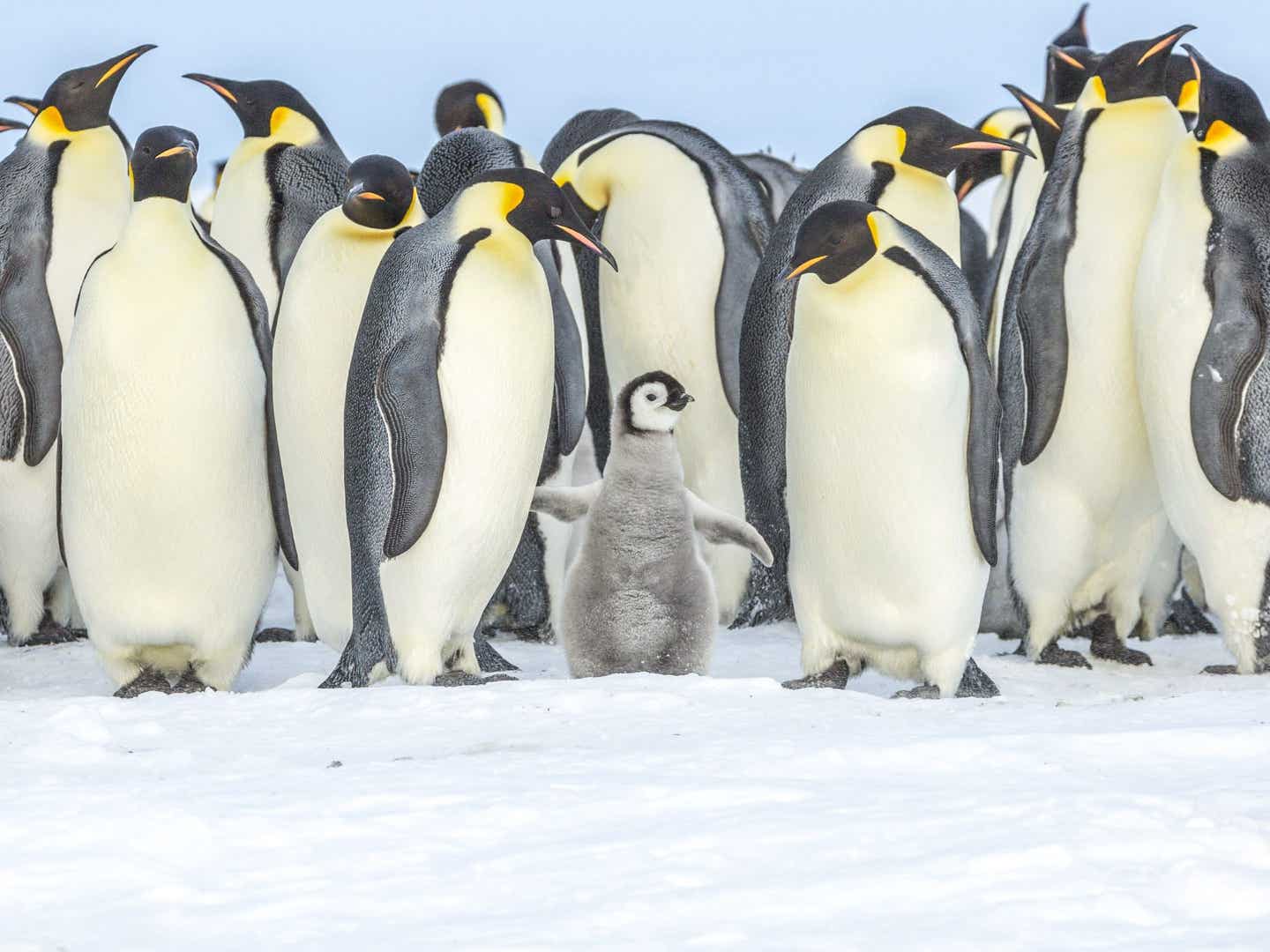Study shows how network of marine protected areas could help safeguard Antarctic penguins
New research led by BirdLife International, the University of East Anglia (UEA) and British Antarctic Survey highlights how a proposed

[Jan. 19, 2021: University of East Anglia]
New research led by BirdLife International, the University of East Anglia (UEA) and British Antarctic Survey highlights how a proposed network of marine protected areas could help safeguard some of the most important areas at sea for breeding Antarctic penguins.
The findings, published today in the journal Frontiers in Marine Science, show that if all the Marine Protected Areas (MPAs) proposed around Antarctica were adopted, the permanent conservation of high-quality areas for a flagship group of Antarctic wildlife - the penguins - would increase by between 49% and 100% depending on the species.
The Southern Ocean surrounding Antarctica is home to thousands of unique species, including seals, whales and four species of penguins - the Adélie, Chinstrap, Gentoo and Emperor. Many of these feed on krill, tiny shrimp-like crustaceans, which are also the target of large commercial fisheries, who harvest them for a variety of krill-based products including fish food.
Penguins are often considered an indicator species whose populations reflect the state of the surrounding marine environment. However, many vital penguin habitats remain unprotected, leaving them susceptible to human-related threats such as pollution, overfishing and climate change.
The study used a new approach based on colony location, population estimates, and tracking data, to identify globally important areas for penguin species around Antarctica, pinpointing 63 key sites.
Known as Important Bird and Biodiversity Areas (IBAs), they are used by at least 1% of a species' global population. They represent important foraging grounds, surrounding breeding colonies of several thousands of individuals when penguins congregate to raise their chicks.
The international team also examined krill fishery activities over the last 50 years and found that while its range of operation has contracted, a consistently disproportionate amount of krill is being harvested within the globally important areas for penguins compared to the total area in which the fishery operates. The results align with other studies which show that krill fisheries might be directly competing with penguins for crucial foraging resources.
Like these kind of stories? Get The Brighter Side of News' newsletter.
"Our findings provide critical evidence about the location and relevance of some of the most important areas globally for chick-rearing adult penguins breeding in Antarctica and nearby islands," said lead author Dr Jonathan Handley, of Birdlife International.
"Over the past five decades, krill fisheries have concentrated into a small number of areas in Antarctic waters, some of which we identified as important penguin foraging grounds. This poses a likely threat for several penguin colonies, especially when they are rearing chicks."
To control the increasing commercial interest in Antarctic fisheries and particularly krill resources, an international convention was established in 1982, governed by the Commission for the Conservation of Antarctic Marine Living Resources (CCAMLR) - an international convention comprised of 25 Member states, together with the European Union.
The convention envisioned the creation of a network of MPAs around Antarctica since 2002, but since 2016 only two have been implemented. Three more have been under discussion for several years but members have not been able to agree on their formal designation.
Co-author Dr Aldina Franco, of UEA's School of Environmental Sciences, said the new study supports the adoption of the proposed MPA network: "Recent studies have shown that krill fisheries could be directly competing with penguins for critical food supplies. The proposed Marine Protected Area network, which has recognised go/no go areas for krill fisheries, can help guarantee that enough krill is available for penguins."
Marie-Morgane Rouyer, who jointly led the research while a Masters student at UEA, added: "Marine resources need to be managed in a sustainable way if we are to guarantee the existence of these emblematic penguin species in the future."
The researchers identified new IBAs that are important for the conservation of Antarctic penguins and examined the overlap with existing and proposed MPAs. They found that Adélie and Emperor penguins currently have 27-31% of the important areas within adopted MPAs, but no Gentoo's IBAs and only 1% of Chinstrap's are within them.
If all proposed MPAs for Antarctica are adopted then an average of 80% of the important areas for penguin conservation would be within an MPA. This highlights the importance of the proposed network, which ultimately could benefit not only Antarctic penguins, but some of the most unique wildlife on Earth.
The research was funded by the Pew Charitable Trusts.
'Marine Important Bird and Biodiversity Areas for penguins in Antarctica, targets for conservation action', Jonathan Handley, Marie-Morgane Rouyer, Elizabeth J Pearmain, Victoria Warwick-Evans, Katharina Teschke, Jefferson Hinke, Heather Lynch, Louise Emmerson, Colin Southwell, Gary Griffith, Cesar A Cardenas, Aldina M Franco, Philip Trathan, Maria P Dias, is published in Frontiers in Marine Science.
Tags: #New_Discovery, #Penguins, #Antarctica, #Animal_Conservation, #The_Brighter_Side_of_News
Joseph Shavit
Head Science News Writer | Communicating Innovation & Discovery
Based in Los Angeles, Joseph Shavit is an accomplished science journalist, head science news writer and co-founder at The Brighter Side of News, where he translates cutting-edge discoveries into compelling stories for a broad audience. With a strong background spanning science, business, product management, media leadership, and entrepreneurship, Joseph brings a unique perspective to science communication. His expertise allows him to uncover the intersection of technological advancements and market potential, shedding light on how groundbreaking research evolves into transformative products and industries.



